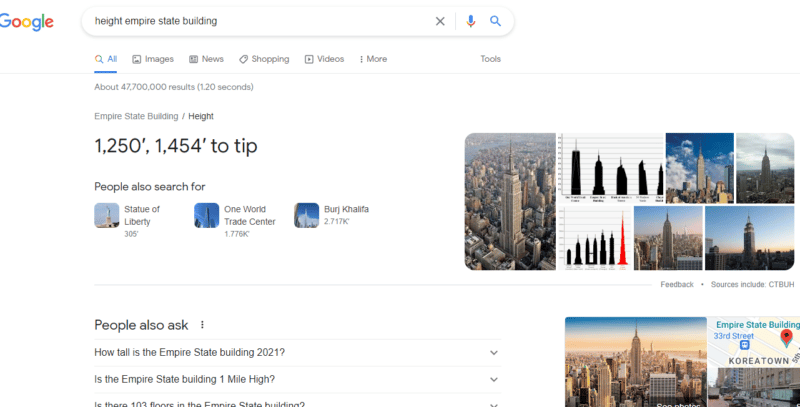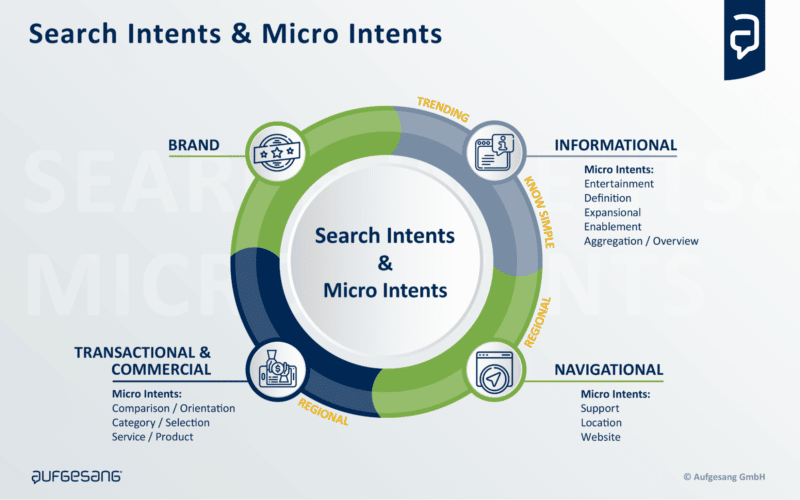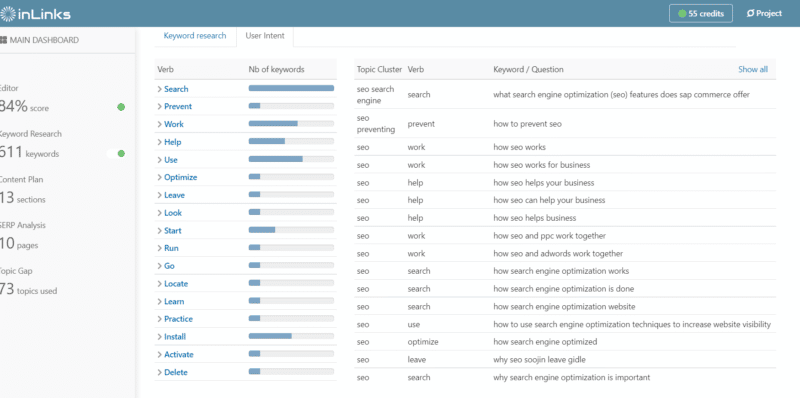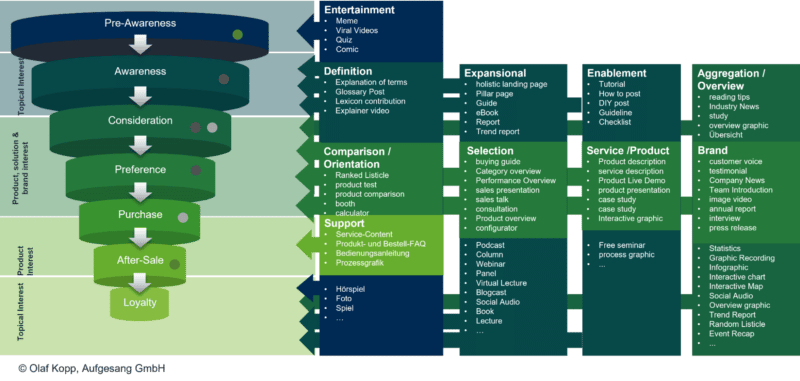Classifying queries based on the classic search intents is no longer as effective as it used to be.
Today, SEOs who want to understand search intent should be closely analyzing micro intents.
This article will discuss 12 different types of micro intents that will help you better understand what types of content you should be creating.
Google’s focus on recognizing the search intent
When I first saw the Quality Rater Guidelines in 2011, I was struck by the recurring reference to search intent.
Google clearly indicates in the guidelines that search evaluators must first understand the search intent behind a keyword before proceeding to evaluate search results.
“Understanding the query is the first step in evaluating the task. If you don’t understand the query or user intent, do web research using the Google search engine or an online dictionary or encyclopedia. If you still don’t understand the query or user intent, please release the task.”
Google’s core updates suggest that, in addition to E-A-T, Google is also focusing on recognizing the search intent and the corresponding matching with the content in order to improve the user experience with the SERPs.
Google is getting better at interpreting search queries and their intent, which makes a more detailed SERP analysis necessary.
The classic search intents
In classic search marketing, keyword are broken down into these categories:
- Informational
- Transactional
- Commercial
- Navigational
- Brand
Transactional and commercial can be combined, as both are similar in terms of user intent.
Google itself classifies the keyword types in its quality rater guidelines according to
- Do = Transactional
- Know = Informational
- Go = Navigational
In 2015, Google also introduced another class to the Know keywords with Know Simple.
For simple search queries, Google delivers a OneBox to deliver an answer directly in the SERPs. Typical use cases for the delivery of a OneBox are:
- Calculators
- Weather
- Time
- Translation
- Specific attributes of an entity
Here is an example for the search query [height empire state building]:

With the search intentions mentioned so far, however, two important differentiating features are still missing. Namely, the need for topicality and regionality. Therefore, it makes sense to add:
- Trending keywords
- Regional keywords
I won’t dive deeper into classic search intentions, because there are plenty of great articles on this topic.
What are micro intents?
The concept of micro intents describes sub-forms of the classic search intents or user intents (transactional, navigational and informational).
The determination of micro intents by analyzing the SERPs allows the derivation of certain types of content that users expect for a search term.
Micro Intents for a better understanding of the search intent
From the experience of hundreds of SERP analyses in the last 10 years, the following content properties and derived micro intents have emerged:

Informational Micro Intents
Micro intents for an information-oriented search can be:
- Entertainment: People want to pass the time and are looking for entertainment. The entertainment can be satisfied with short snackable content such as memes or short video clips, which are usually consumed directly on the respective social media platform (social content) and shared.
- Definition: Users looking for basic answers (e.g. to the question What is…? Which does ______________ mean …? How important …?) first want to understand what something means in order to open up the context of a topic and/or to decide whether it makes sense to delve deeper into a topic. They are beginners. Wikipedia articles are a typical example of content that fits this micro intent. Google sometimes tries to answer this search intent with answers directly in the SERPs (e.g. featured snippets)
- Expansional: Users who want to delve deeper into a topic in their online research need detailed content that sheds light on as many perspectives as possible. The content should comprehensively describe a topic and answer several questions. The so-called holistic landing pages or pillar pages are a sensible approach to serve this search intent. Here, the depth and scope of the content plays a special role, but also new perspectives that have not been published often.
- Enablement: Users who want to empower themselves to do something need specific guidance. Content that is intended to serve this search intent should answer the How do I…? questions step by step.
- Aggregation/overview: Similar to the expansional search intent, the user is concerned with getting a neutral overview of a topic. However, the content should be kept as short and clear as possible (e.g., in the form of tables, thematic or random listicles).
Transactional/commercial micro intents
Micro intents for a transaction-oriented search intent can be:
- Comparison / orientation: The user is on the way to buying a product service or at least shows interest in investing. In order to get an overview, he looks for the best solution. Ranked listicles, tests or comparisons make sense for this search intent.
- Category / selection: With this search intent, there is a specific interest in products and services. The user knows roughly which solution is the right one for him, but is not yet sure which variant of a service or product group is the right one. Classic shop category pages or service overview pages are ideal for this search intent. The products and/or services should be the focus of the main content (MC), possibly accompanied by information to simplify the decision for a variant.
- Service / Product: The user knows pretty much exactly what he wants or which solution is the right one for him. He is about to make an inquiry/order and would like to find out more about the properties, price, delivery, delivery costs, guarantees … in detail. Service detail pages and product detail pages make sense to serve this search intent.
- Brand: In addition to the classic search intent brand, another micro intent can be added. This takes into account the user’s need to find out more about the brand or provider in order to build trust. Typical types of content here are testimonials, customer testimonials, field reports…
Navigational Micro Intents
- Support: The user requires service content for the use of an ordered product. Instructions for use and product-related FAQs make sense here as content.
- Location: the user wants to find a location near or in a place with the intent to visit it.
- Website: The user wants to navigate to a specific area of a website.
More to read about the concept of micro intents here.
Micro Intent by Verbs
Another smart approach to the detailed classification of search intents can be found at Inlinks. When classifying the search intent, the team around Dixon Jones uses the verbs used in the context of the keyword/topic as a guide.

The types of search intent in the customer journey
In the research process for solutions, products, offers … search queries often follow a specific sequence.
Depending on the phase in which the searcher finds himself, he wants information, then solutions, and finally certain products to buy.
Here, the search intent types play a role, which can theoretically be arranged in a certain sequence.
A trigger ensures that a user enters a research process, which can begin at different stages of the customer journey depending on the level of knowledge.
Google describes this process in the “Messy Middle” as alternating between exploration and evaluation, before making a purchase.

Not every search process follows the same pattern.
Depending on the offer or product, these search sequences can run differently within the customer journey. The following is a sample search sequence by keyword type:

In the Pre-Awareness phase, a trigger is necessary to lead a user into a search journey. Then, depending on the level of knowledge, the user will work his way through informational, transactional, and commercial to conversion, or directly enter the preference phase via commercial search queries.
Brand and navigational terms play a role from consideration to the end of the customer journey.
Map content types into the customer journey according to micro intents
Mapping content types to the customer journey isn’t easy. It makes more sense to include user micro intents in content journey mapping.
In the following overview graphic, I have grouped the content types according to micro intents.
Again, there are types of content that can be used to satisfy multiple micro intents. The following overview is only intended to explain the principle, but only contains selected typical types of content. A more complete grouping then follows in the next few chapters, broken down by customer journey phase.
Below I have grouped different types of content according to the customer journey phases. In the end, however, it is not the type of content that determines the customer journey phase, but the topic itself or the micro intent that the content should fulfill.

Content types in the pre-awareness phase
In the Pre-Awareness phase, content must be proactively distributed to the user, as the user himself has no proactive interest in a particular topic or need.
In other words, emotional content that generates reach. Possible psychological triggers can be: fear, fun, surprise, indignation or lust.
The topics can be diverse.
Possible content types can include:
- Viral videos
- Memes
- Education
- Entertainment events
- Games
- Comics
- Riddles
- Reports and reports
- Psychological tests
- Polls
- Social media stories
- Columns
- Sweepstakes
Content types in the awareness and consideration phases
In the awareness phase, the user actively searches for topics about which he would like to find out more. He or she is actively researching a topic related to the offer or is already doing so.
As a shop for running shoes, you could offer content related to the topic of losing weight and health, such as nutrition tips or fitness guides.
Possible content types can include:
- Podcasts
- Calculator
- Advisory
- Interviews
- Webinars
- texts
- Instructions
- Checklists
- Guides
- Specialist articles
- Studies
In the consideration phase, the user shows an initial interest in or need for solutions, which can include their own products.
With the “Around-the-Product-Content” one should take care to keep the information neutral. Here the content acts as a “solution-finding consultant”.
The shop for running shoes should emphasize the advantages of jogging for the goal of losing weight, but also point out other areas such as nutrition, in order to then present an overview of the best running shoes or a running shoe configurator in the next step.
Possible content types can include:
- Product tests and comparisons
- Solution overviews and lists
- Configurators
- How to find … guides
- Advertorials
- Workshops
Content types in the preference and purchase phase
In the preference phase, the user shows specific interest or need for products and offers to which your own products belong. Here the “About-the-Product-Content” acts as a “purchase advisor” and the previous information neutrality can be lifted.
The content on the shop category and product detail pages is important for the running shoe shop.
Possible content types can include:
- Product texts
- Product and material
- Manufacturer
- Case studies
- Buying guides
In the preference phase, the user determines a narrower circle of possible suppliers (relevant set). That is why it is also important at this point to communicate the core story directly (“about the brand content”).
Possible content types can include:
- Company profile
- Videos
- Reports on social and ecological commitment
- Awards
- Case studies
- Customer testimonials
- Reviews
In the purchase phase, the user has decided to order the product or offer from a provider or is in the contractual phase final talks.
In this phase, he needs information about the purchase process by means of “about-the-process-content.”
Possible types of content can include:
- FAQs
- Terms
- Explanations of the ordering
- Payment
Types of content in the after-sales and loyalty phase
In the after-sales phase, the user again needs “about-the-process” and “about-the-product-content.” But this time to the further process of ordering and using the product.
For the running shoe shop, this could be the order confirmation and care instructions for the shoe.
Possible content types for the after-sale phase can include:
- Order confirmation
- Delivery status
- Information on the first steps or kick-off
- Use
- Operating instructions
- Care instructions
- Installation or assembly instructions
In the loyalty phase, the user again needs the same content types as in the awareness and pre-awareness phase – tailored to his previous interests and preferences. The goal of the content of the loyalty phase is to turn the customer into a repeat buyer and/or loyal supporter.
11 key insights about micro intents
- Content formats can/should be used multiple times for one type of content. In this way, synergy effects can be used and the different consumption preferences of the target groups can be taken into account.
- SERP analysis, keyword research, surveys or discussions with the target group should help identify the appropriate content formats based on consumer preferences.
- Certain types and formats of content perform differently at different stages of the customer journey.
- The consumption habits for content differ according to industry, target groups, personas and context (e.g., place of consumption or end device used).
- The classification according to the classic search intents transactional and informational is often not sufficient to derive clear recommendations for the content to be created. Therefore, the classification according to micro intents makes more sense.
- In the first two phases, pre-awareness and awareness, “around-the-user content” makes sense. This is content that does not deal with the offer or the product, but with the topics of the users beyond that.
- From the consideration phase, the user’s interest in solutions and products increases. In the consideration phase, they are often still undecided as to which solution is best for them. There he needs to get an objective overview of possible solutions.
- In the preference phase, he is already one step further. He has focused on one or more solutions and created a relevant set of potential providers for the solution(s).
- In the purchase phase, he decided on a provider and wants to conclude the contract quickly and easily.
- In the after-sales phase, he makes the first positive and negative experiences with the offer and needs it. if necessary, support during commissioning, optimal use or the return.
- In the loyalty phase, the game starts again from the beginning and he may want more information about topics and offers.
The post How to use 12 micro intents for SEO and content journey mapping appeared first on Search Engine Land.
No comments:
Post a Comment